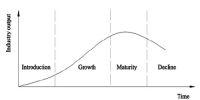Strategic evaluation and control can be defined as the process of determining the effectiveness of a given strategy in achieving the organizational objectives and taking corrective action wherever required. Actually, it is a system of monitoring, supervision, and follow-up. The fundamental strategy evaluation and control activities are: reviewing internal and external factors that are the bases for current strategies, measuring performance, and taking corrective actions.
The following guidelines are suggested to make control effective:
- Minimum information: Control should involve only the minimum amount of information. Because too much information tends to clutter up (block) the control system and creates confusion.
- Monitor only managerial activities: Control should monitor only managerial activities and results even if the evaluation is difficult to perform.
- Timely: Control should be timely so that corrective action can be taken quickly.
- Long-term and short-term: Long-term and short-term controls should be used so that a balanced approach to evaluation can be adopted.
- Pinpointing exceptions: Control should aim at pinpointing (analyzing) exceptions as nitpicking (fault-finding) does not result in the ineffective evaluation.
- Rewards: Rewards for a meeting or exceeding standards should be emphasized so that managers are motivated to perform. Unnecessary emphasis on penalties should be avoided.
So, these are the various guidelines or requirements for effective control.















